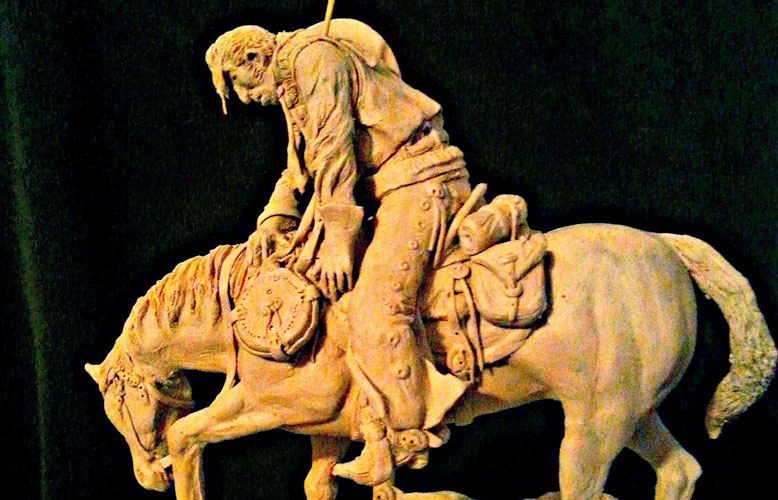by MADELYNN BOWERS A&E Feature Writer
Self-taught in the art of sculpting, and a recent transplant to Central Oregon, Keith Bennett has been molding incredible Western-inspired bronze artwork for the past year.
Though almost exclusively a pencil artist for the majority of his life, Bennett always had an interest in sculpting, and began pursuing this form of art at around the same time he moved to the high desert.
The process to craft a bronze sculpture is lengthy, and a practice Bennett describes as, “a very labor intensive,” one involving, “many talented people.”
First, a clay is used to create the initial form of the sculpture. Bennett prefers plasticine, an oil-based modeling clay, because of its firm, yet unfailingly pliable nature, even after long durations of time. He sculpts around wire armature, which allows for a basic outline of the sculpture to be followed.
Between 40 and 80 hours are devoted to just the molding and perfecting of this clay. Bennett then takes his sculpture to a bronze casting foundry, a location where metal castings are created. There a silicone rubber mold is placed to envelop the original clay work.
After the silicone has cured, it is removed from the silicone mold and the rubber mold is reassembled. A hard wax is then poured into the reconstructed mold. Once the wax is dry it is removed from the silicone mold and dipped into a slurry, a concrete-like substance; the wax and plaster combination is now referred to as an “investment,” which is heated up inside of a kiln in order to melt the wax from the plaster.
Molten bronze is poured into this empty plaster shell and the slurry is finally broken away. The pieces of the sculpture are now carefully welded back together and the bronze is polished to eliminate any flaws that occurred during the casting. Bennett supervises the coloring of the final bronze, as well as the waxing procedure.
Currently, Bennett draws inspiration for his bronzes from a Western lifestyle; his sculptures portray strong emotion through scenery depicting cowboys and Native Americans. His personal background with a Southern upbringing and a prominent exposure to an agricultural lifestyle, has also influenced his work. Being raised among these ranchers and pioneers led to a desire to capture the lives of these men; many of whom embody the spirit of the Wild West.
Bennett cares greatly about the honesty of his pieces and claims, “[I] strive for realism. I want it to be accurate. I want all the equipment on the horse to be accurate.”
This authenticity carries an immense deal of gathered emotion and each individual work of Bennett’s is meant to convey a very specific and intense feeling. This realism enables the incorporation of painstaking and intricate detailing into Bennett’s works.
Bennett’s bronzes will be available for public viewing at the Circle of Friends Art and Academy Gallery in Tumalo. His works and the extended processes chronicling his clay sculpting and detailing, are available on his Facebook page, Keith Bennett’s Western Bronze Sculptures.
kmb09876@gmail.com

